Busan is known as the “City of Film” — but not simply because it plays host to the Busan International Film Festival (BIFF). The city has built a robust cinema infrastructure that includes numerous film-related facilities and organizations.
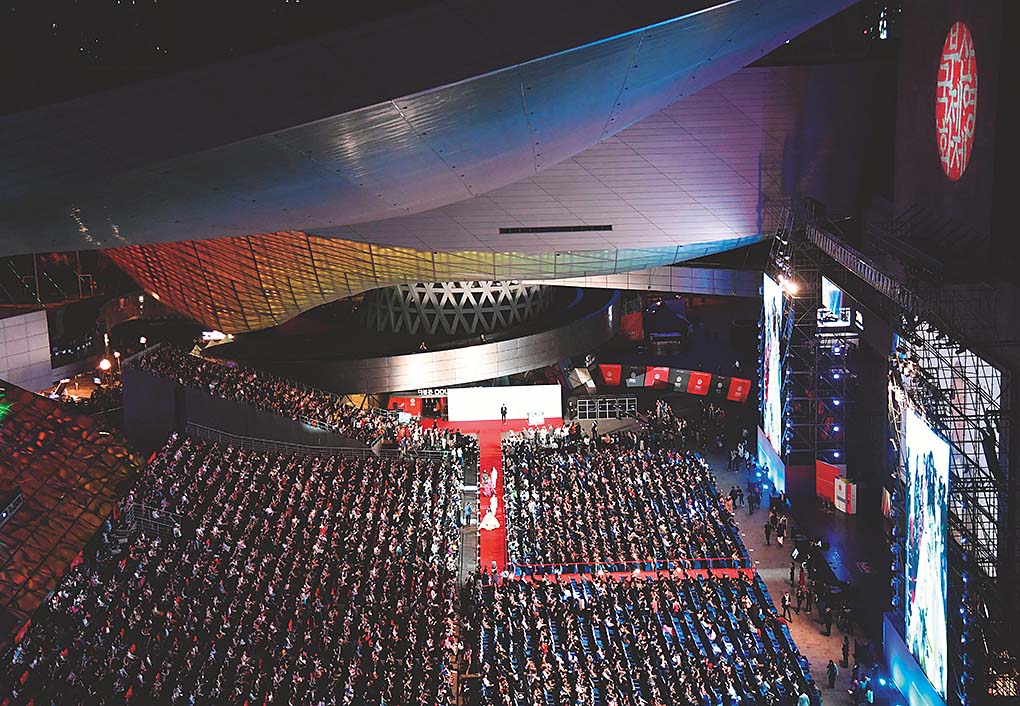
The 24th Busan International Film Festival opens on October 3, 2019, at the Busan Cinema Center. The festival’s exclusive venue and the core of Busan’s remarkable film infrastructure, the center is a complex of two four-story buildings and a nine-story building. It was completed in 2011. © NewsBank
Can Busan become a cultural hub? This question was posed in the 2017 book “The Cultural Infrastructure and Festivals of Busan,” published by Pukyong National University’s Institute for Humanities and Social Sciences. As one of the contributing writers, I was skeptical at first. However, while conducting research and writing for the book, my thoughts changed dramatically — at least with respect to the film scene.
Before the book, I had not given serious thought to Busan’s film infrastructure. The phrase “Cinema Busan” sounded as if it referred solely to BIFF. But I realized this was a misconception: the city offers so much more in the way of film-related facilities and public institutions.
First on the list are the Korean Film Council and the Korea Media Rating Board, which relocated to Busan from Seoul in 2013. Although they function on a national scale, their presence has undoubtedly raised the stature of Busan on the Korean movie scene. The impact of more local assets cannot be overlooked, either: Cinematheque Busan, the Busan Cinema Center, the Busan Film Commission, and the Busan Film Critics Awards are all invaluable pillars.
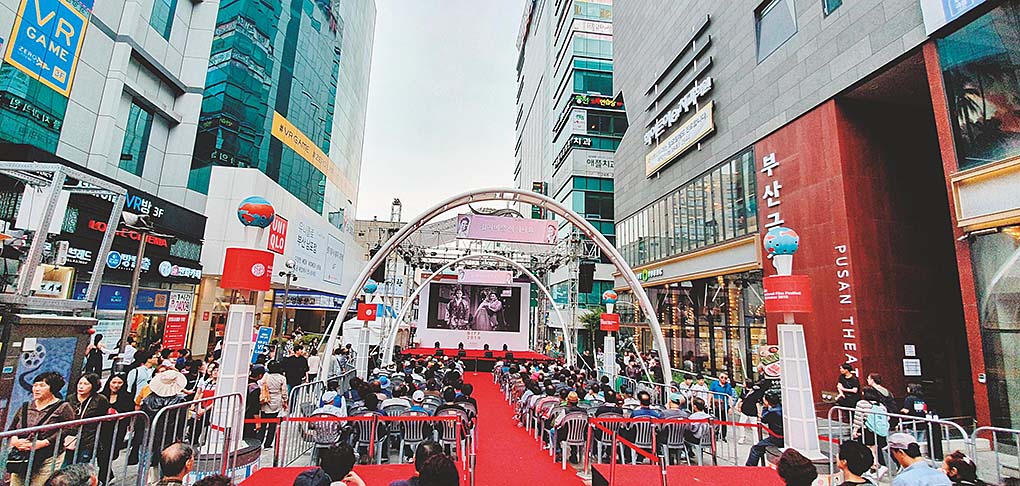
Movie fans attend a screening of the 24th Busan International Film Festival at BIFF Square, an outdoor venue in the old city center of Nampo-dong. The square hosted the festival’s major events until 2003 when the main venue was relocated to Haeundae. © Busan Metropolitan City
Pioneering Role
A cinémathèque is a film archive that also holds screenings of movies in its collection. Founded in 1999 at the Suyeong Bay Yachting Center in Haeundae District, Cinematheque Busan was the first of its kind in Korea. It mostly screens rare classic films, art movies and independent films that are not shown in commercial theaters. Since 2007, it has also offered a wide array of cinema-related educational programs for the general public.
Cinematheque Busan is now housed in the Busan Cinema Center, which opened in 2011. Famous for its architectural design by the Austrian firm Coop Himmbelb(l)au, the center has been pivotal in the evolution not only of Cinamatheque Busan but of BIFF as well.
The Busan Film Commission (BFC) also emerged in 1999, the brainchild of the metropolitan government of Busan. It was the first film commission in Korea and the second in Asia. At the time, the Korean movie industry was enjoying a renaissance and the commission was tasked with providing one-stop administrative support services. Other municipal governments followed suit and there are now 12 more regional film commissions in Korea.
By the end of 2018, some 1,300 movies and other visual content had received BFC support. The commission has also helped to expand the infrastructure of the local film industry.
Some of the BFC’s notable initiatives include the Cinema House Hotel in Busan and the Busan Cinema Studios, which provide a more convenient shooting environment; the Busan Cinema Venture Center, which houses film and visual media firms; the Busan Asian Film School, which offers a curriculum in filmmaking; and the Busan Visual Industry Center, which nurtures human resources and attracts film-related companies from the Seoul metropolitan area.
Well before these institutions and initiatives, however, came the Korean Association of Film Critics (KAFC), known today as the foremost film critics’ organization in Korea. The KAFC was founded in September 1950 in Busan, then the wartime provisional capital of the Republic of Korea. It was followed in 1958 by the Busan Film Critics Association (BFCA), the first independent regional critics’ group in the country.
The phrase “Cinema Busan” sounded as if it referred solely to BIFF.
But I realized this was a misconception:
the city offers so much more in the way of
film-related facilities and public institutions.
Blazing an Independent Path
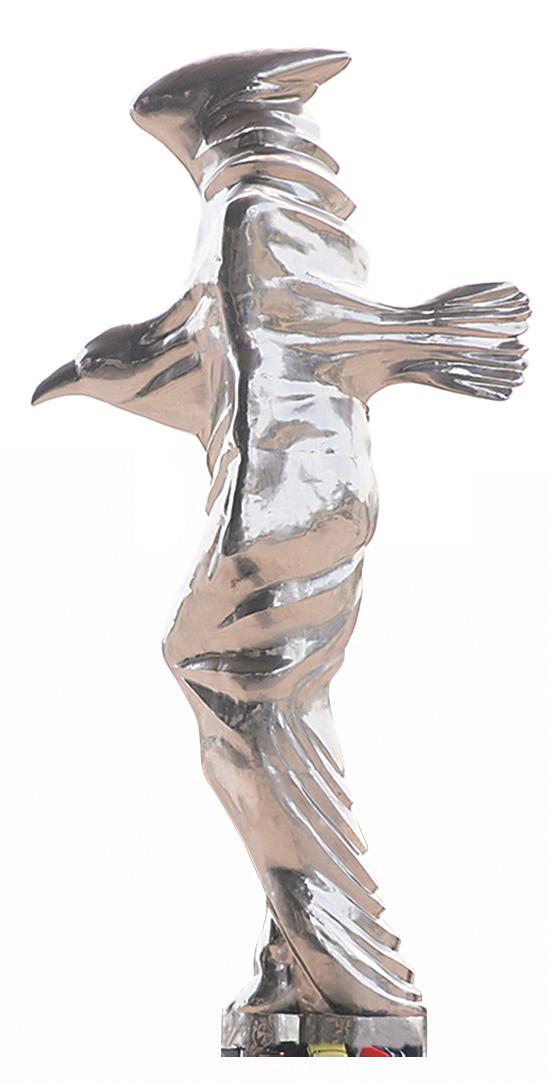
“Lady-Bird Transformation (Mirage)” by Ralf Volker Sander. 2012. Stainless steel, 10.2 × 4.6 × 2.6 m.The sculpture at the Busan Cinema Center’s Dureraum Square was selected from among many international submissions. Viewed from the front, the sculpture is shaped like a woman, but from the side, it resembles a seagull.© Naver blog "Eunhoxxi"
The BFCA set out to promote a rich, vibrant film culture through its review of both domestic and foreign films, guiding the public to develop a discerning eye and engaging in research and other activities. The association hosted the first Buil Film Awards, created by local daily Busan Ilbo in the same year. The group’s thorough and objective reviews and recommendations of quality films have contributed to the development of Korean cinema and significantly enhanced public appreciation and understanding of films.
In 2000, the BFCA began holding its own film awards, known for their strong regional flavor and unconventional bent. This can be interpreted as an intentional tilt toward regional or non-mainstream works, sharply contrasting with the more establishment-oriented KAFC Critics Choice Awards.
The difference between the two associations became apparent at the first Busan Film Critics Awards. The Best Film award went to director Hong Sang-soo’s “Virgin Stripped Bare by Her Bachelors,” which depicted a love triangle between two men and a woman. That year, at the KAFC’s 20th Critics Choice Awards, Hong’s movie went home empty-handed while Best Film went to “Peppermint Candy.” Directed by Lee Chang-dong, the movie intertwined an anguished personal history with the tragic modern history of Korea. Lee also won Best Director at the same ceremony but his counterpart at the Busan Film Critics Awards was Bae Chang-ho. Bae’s movie, “My Heart,” was largely unknown to the general public.
This trend repeated in 2018 when the Critics Choice Award for Best Film went to “1987: When the Day Comes” by Jang Joon-hwan. It told the stories of pro-democracy activists who sparked the June Democracy Movement in the eponymous year. The Busan Film Critics Awards presented Best Film to “The Remnants,” a documentary about embattled residents of a Seoul neighborhood designated for demolition and redevelopment. Several died in a fire while resisting eviction by the police.
Though it has not always been the case, these distinct differences in inclination between the two associations serve to demonstrate the legitimacy of the BFCA. It may be incomparably smaller in terms of size and membership, but the BFCA have consistently remained steadfast to its principles while the KAFC could be said to have lost direction.
Many other film-related associations and institutions in Busan are worth mentioning. Among them are the Busan Independent Film Association founded in 1999 and its Independent Film Festival Busan, which celebrated its 21st edition in 2019; the Buil Film Awards, which emphasize fairness and transparency in the selection process; and the Busan International Short Film Festival, which began as the Korean Short Film Festival in 1980 and has since transformed significantly.
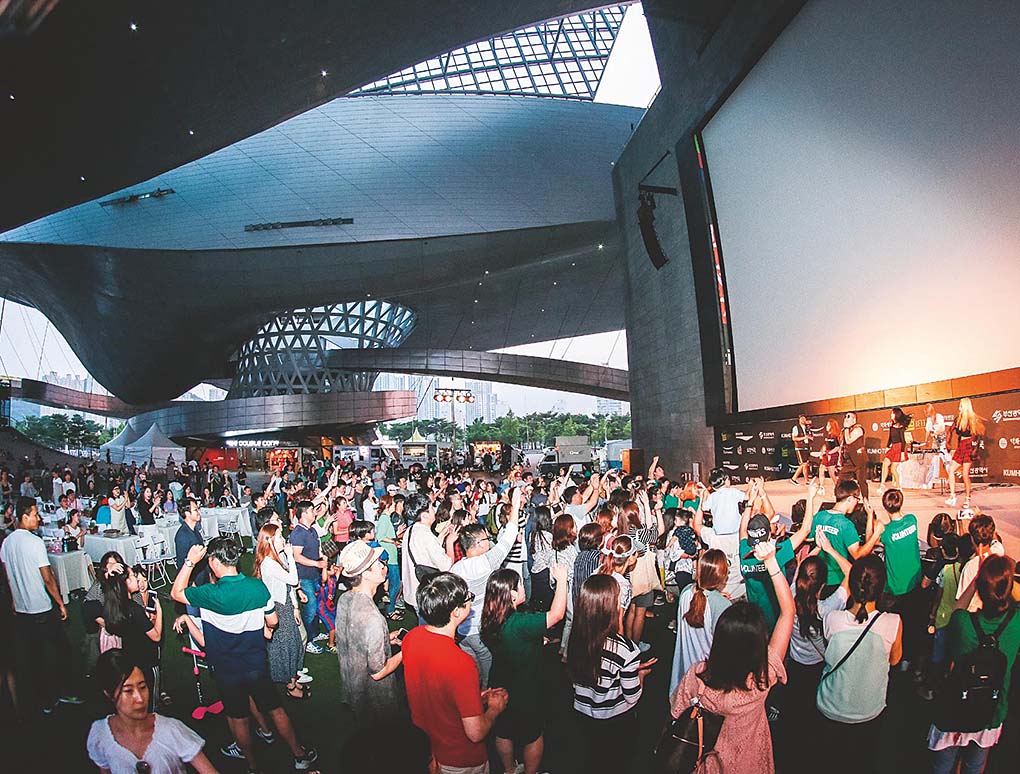
Crowds cheer at an outdoor performance held at the Busan Cinema Center as part of the 2017 Busan Food Film Festa. © Busan Cinema Center, Busan Food Film Festa
More Festivals
And that’s not all. Cinema Street in Haeundae District attracts local visitors as well as tourists from around the country and the world. The Chinese restaurant Jangseonghyang on Texas Street across from Busan Station, which became famous for its fried dumplings as featured in Park Chan-wook’s 2003 hit “Oldboy,” bustles with customers. And the Busan Museum of Movies on Daecheong-ro in Jung District draws many visitors year round. Indeed, Busan is deserving of its title, “City of Film.”
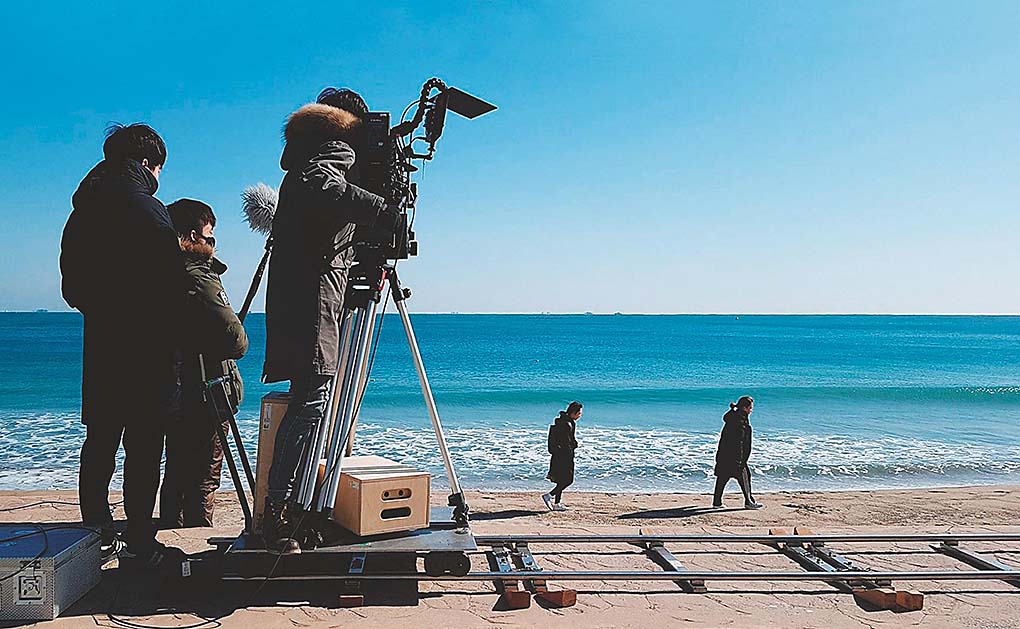
Students of the Busan Cinema Center’s film academy learn about video production. The academy offers more than 50 courses every year for aspiring filmmakers. © Busan Cinema Center
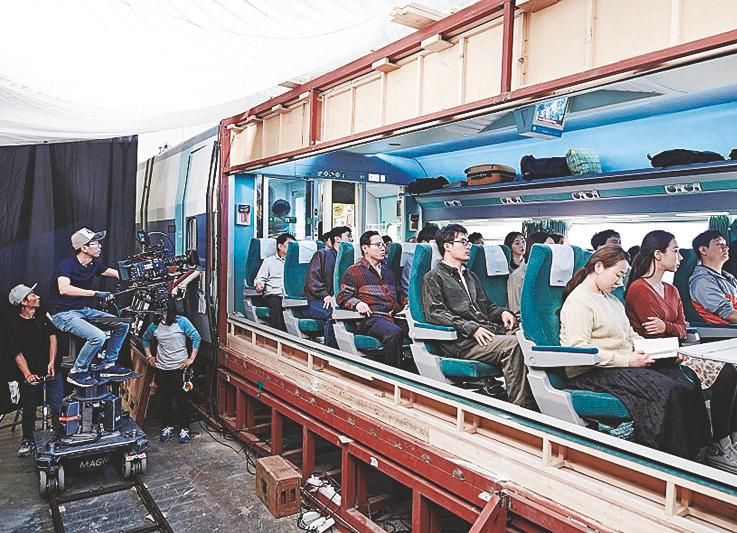
Director Yeon Sang-ho’s 2016 hit movie “Train to Busan” is shot at the Busan Cinema Studios. Managed by the Busan Film Commission, the location has two indoor studios with floor areas of 826m² and 1,653m². © Next Entertainment World
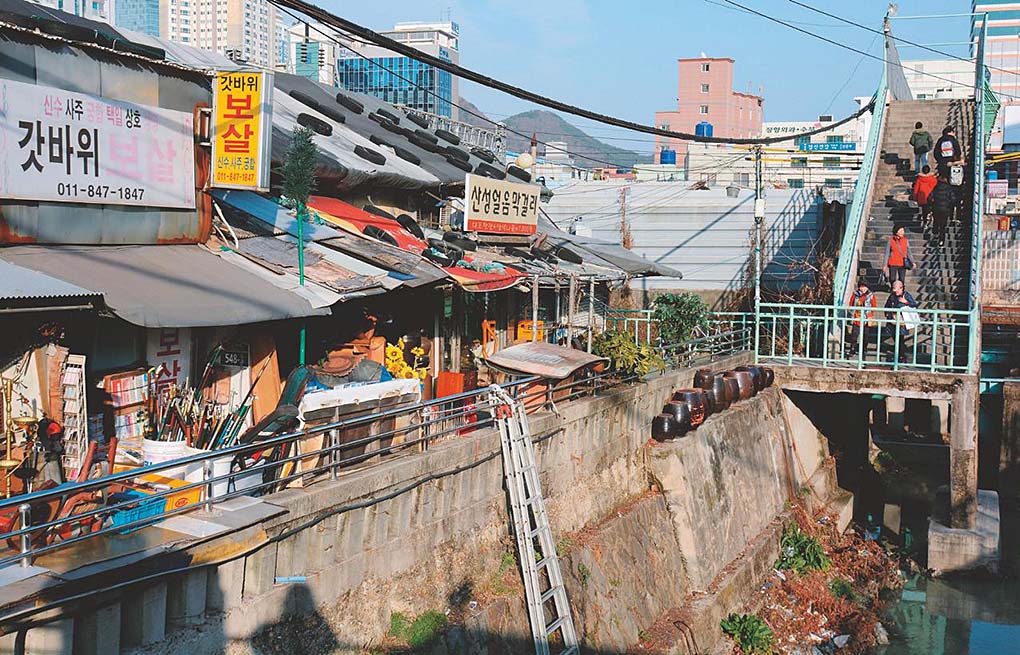
Busan is home to many movie locations. Beomil-dong appears in many popular films, including Kwak Kyung-taek’s “Friend” (2001), Im Kwon-taek’s “Low Life” (2004) and Bong Joon-ho’s “Mother” (2009). © Moon Jin-woo
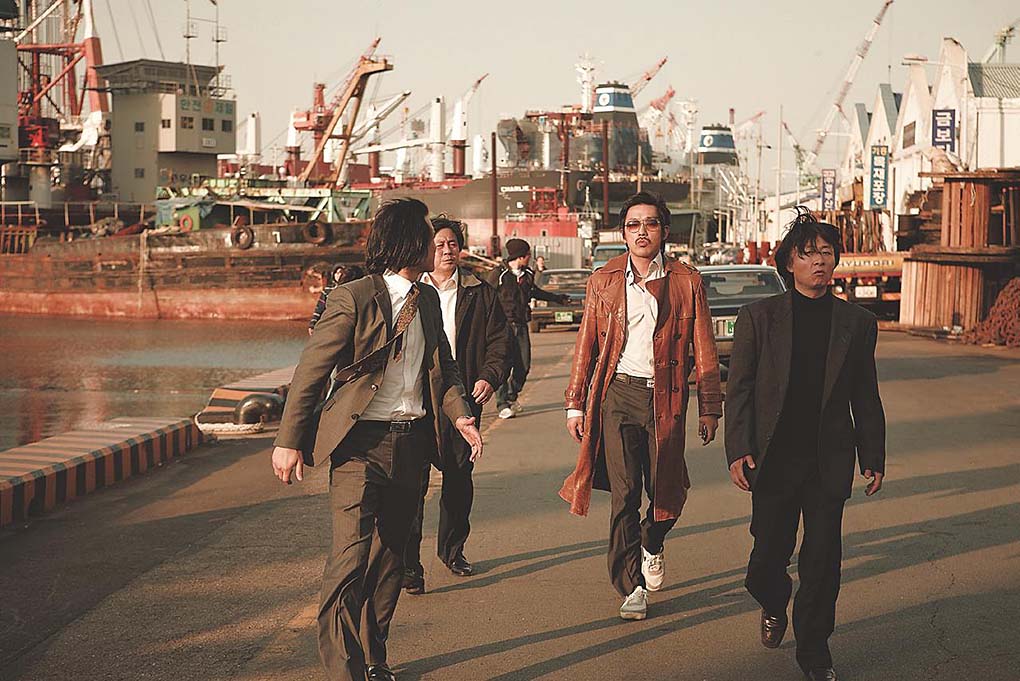
A scene from “Nameless Gangster: Rules of the Time,” a 2012 film directed by Yoon Jong-bin. It was shot at Yeongdo Shipyard owned by Hanjin Heavy Industries & Construction.© Showbox
On the 24th BIFF
The year 2019 marked the 24th edition of the Busan International Film Festival (BIFF), yielding both impressive results and valuable insights on its future direction. Once again the festival proved its prominence as Asia’s premier film event with screenings of 299 films from 85 countries, among which 118 were world premieres (95 feature films, 23 short films) and 27 were international premieres (26 feature films, 1 short film).
The most noteworthy among the festival’s numerous programs was a retrospective of cinematographer Jung Il-sung. It expanded and deepened the range of Korean cinema retrospectives, previously confined mainly to the oeuvres of directors or actors. Several major international film festivals are expected to benchmark this pioneering endeavor.
Also deserving of attention was “The Horse Thieves. Roads of Time,” which opened the festival, a first for a Central Asian film. It was co-directed by Yerlan Nurmukhambetov, recipient of the New Currents Award for “Walnut Tree” at the 20th BIFF in 2015, and Japanese director Lisa Takeba. The brilliant storytelling of a simple but dramatic incident that the title portends, unaffected characters and realistic performances, and a Western mise-en-scéne reminiscent of John Ford’s “The Searchers” (1956) or Clint Eastwood’s “Unforgiven” (1992) raise hopes for the future of Kazakh cinema.
It cannot be denied that BIFF has attained remarkable status on the international film scene. Still, misgivings over its future do exist. The 2019 BIFF was the second after the reshuffling of its executive committee in 2018. But the number of viewers declined by some 6,000 to 189,116 from 2018, when a typhoon badly hit the venue. Probably this means that BIFF has still not fully emerged from the shadow of political conflict surrounding its independence from government interference.
In 2014, BIFF scheduled a screening of “The Truth Shall Not Sink with the Sewol” (Korean title: “Diving Bell”), a documentary that criticized rescue efforts after the capsizing and sinking of the Sewol passenger ferry six months earlier. A total of 304 passengers died, most of them high school students. The central government and the city of Busan called for the screening of the controversial documentary to be canceled but BIFF proceeded to show it.
It is hard to determine for sure whether this is a temporary decline or a portentous signal of a prolonged slump. But needless to say, a thorough diagnosis of the cause and appropriate measures are necessary.
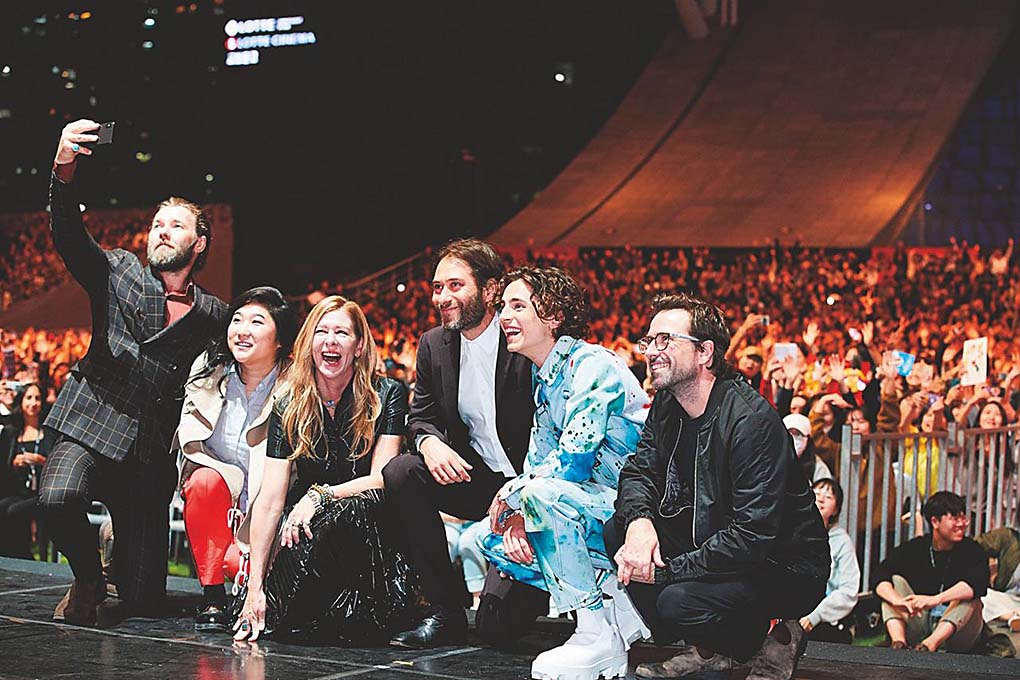
Director David Michôd (far right), lead actor Timothée Chalamet (second from right) and other crew members of “The King,” the much-talked-about movie at the 2019 Busan International Film Festival, pose for a picture with moviegoers. © Busan International Film Festival